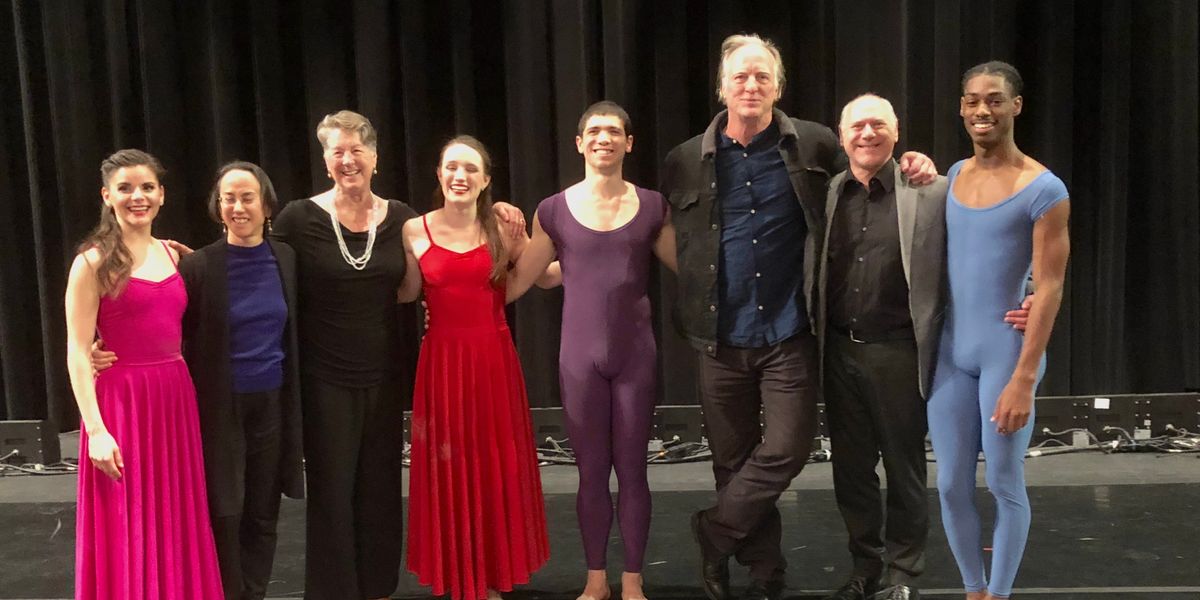Why Lar Lubovitch Invited College Students to Perform for His Company's 50th Anniversary
A watershed moment. That’s how choreographer Lar Lubovitch recently described his now-classic A Brahms Symphony. Now, a group of 16 George Mason University dance majors are having their own watershed moment with that jubilant work: They will dance it at the venerable Joyce Theater in New York City, where they will close the 50th anniversary season of the Lar Lubovitch Dance Company on April 22. It’s such a big deal the college president, Angel Cabrera, likened it to when the basketball team made it to the NCAA Final Four.
The invitation to the George Mason dancers was extended in March, after Lubovitch spent a few days on campus observing and rehearsing the students. Ginger Thatcher, the choreographer’s stager for this project, convinced him that the students were strong enough to hold their own among the professionals dancing at the Joyce. “They danced it very accurately, very beautifully and with great maturity, which is the thing one would least expect from people their age,” says Lubovitch, who noted that his own first dance experience was a class with Martha Graham as a 19-year-old—about the age of some of the Mason dancers.
Your browser does not support the video tag.
Students in the BFA program are no strangers to Lubovitch’s works. One of their professors, Susan Shields, danced with the Lubovitch company as a young dancer in New York City. Now the director of the dance program at the Fairfax, Virginia, campus, each year she introduces freshman dance majors to Lubovitch’s highly physical and demanding style during their second semester technique class. The students call it “Lar week.”
“It’s important that students understand their professors’ context—where we all fit into dance history,” she explains. Her colleague Roger Jeffrey, another Lubovitch alum, also passes on his experiences to the students.
The students began learning A Brahms Symphony from Thatcher last fall, following a two-part audition that Mason’s approximately 80 dance majors attended. Thatcher narrowed it down to a dozen, plus five understudies. It’s a large piece that demands attention to musicality, detail, and the utmost stamina and technical prowess to make the sweeping gestures, lifts and runs appear effortless.
“I think Brahms can be called a watershed moment for where I was at the time as a dancemaker,” Lubovitch says. “I had been making dances for almost 20 years and moving in a lot of different directions. When I did Brahms Symphony, it was a very true moment for discovering who I am. I admitted to my relationship to grand music and—the worst of all sins—sentimentality and emotionality. It was a moment of accepting who I really was as a creator and the essence of what my work really is.”
Aside from perfecting the choreography, the students, in particular the four lead dancers, connected via email, phone and then in-person with the originators of the roles—Doug Varone, Nancy Colahan, Christine Wright and Rob Besserer. “The original artists really help us hone in on what is essential to the piece,” notes Lauren Stucko, a senior from Middleton, New Jersey. The work “is such an exuberant, long piece that has so many climaxes and peaks, and the trajectories are pretty wild emotionally and physically,” she adds.
Marcel Mejia, a junior from Miami who is dancing one of the leads, describes his participation in A Brahms Symphony as profound: “It feels like some form of time travel. Performing the piece feels like I’m back in 1985 embodying the spirit of this extremely prominent work that has stood the test of time.”




